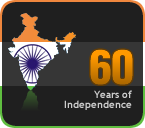 |
| Plain sevai. Picture courtesy www.subbuskitchen.com |
Sevai and Mor Kuttan -- what a combination! It brings back memories from childhood. Not the instant, packed, ready-to-cook sevai — but freshly prepared, right from scratch, starting with grinding the rice. Making Sevai at home in those days without any electric gadgets was hard work. We children never thought how much time and energy was spent in preparing it, we were more interested in enjoying the end product.
My mother and my elder sister were very adept in preparing this dish. They used to make an occasion of this by inviting all the local family members to join us to savour the Sevai, with Mor Kuttan, Rasam, Appalam and Vattal -- all the side dishes that go well with the main dish. They were helped by my mother’s Mami to do all the hard work, who was always ready to give my mother or my elder sister, a helping hand.
Mami was very good at preparing tasty dishes. The very memory of the ‘Karavadai’, she used to make makes my mouth water even after so many years. Kunjami as we used to call her was my mother’s youngest mami. As was common in those days her husband had a second (unofficial) wife with two children. So Mami, with her two children, was finding it a tough job to make both ends meet. By helping others in the kitchen, whenever wanted, she was able to take care of her two children with the extra income she earned. Mami was big built and real fat but that did not deter her from hard work like grinding in the Aatukkal.
In those days, most houses had an Aatukkal and Ammi fixed to the floor, either in the kitchen itself or in the work area next to it. In most houses, there was also, in one of the walls, a hole two inches in diameter, three inches deep, and inlaid with an iron lining. We kids used to wonder about this hole in the wall and each one of us had our own explanation. When asked, my mother would respond with ‘wait and see’. And we had to wait till it was Sevai day to discover what it was for.
On Sevai day, Mami would enter the kitchen and take complete charge of things. Grinding the rice and all the work at the fireside was done by her. As my mother used to say someone should be in the kitchen to do all the walking and fetching things for her. Mami’s first need was to get a good lota of coffee after which she made herself comfortable at the grinding stone to grind the well-soaked parboiled rice to a smooth paste.
 |
| Dough rolled into balls |
The next step was to place the dough in a thick-bottomed pan over a low flame, allowing all the water content to evaporate. Mami would stir the dough in the pan continuously, while making herself comfortable sitting on the floor by the fireside. After that was done, she would use one and all in the kitchen to help her make the thickened dough into fist-sized balls. These dough balls were then either steamed or cooked in boiling water.
Now it was time to bring out the SEVA NAZHI, the Sevai-making apparatus. It was made of bell metal or brass and consisted two U-shaped parts, the top one sliding tightly into the lower one. The bottom of the lower one was full of small holes, like a sieve. For the Sevai making operations to begin, the Seva Nazhi was fitted into a special wooden stool about two feet high one foot wide which a hole in the centre.
By now Mami would be in full form. She would ask for a big banana leaf which she would clean and spread on the floor in front of the hole in the wall. She would place the stool with the Seva Nazhi on the leaf. Placing the steamed dough balls one at a time in the lower part of the Nazhi, Mami, with all her power, would press down on the dough ball with the upper part. We children would shout with joy as thin strands of the Sevai would start falling on the green banana leaf.
 | ||
| A present-day sevai nazhi |
Sometimes more pressure would be needed to press the dough balls down the Nazhi. For that a wooden pestle, about three feet long and with both ends capped with iron, was needed … and also the hole-in-the-wall. One end of this pestle was fitted in to the hole in such a way that its middle portion rested on the Nazhi. Strong hands would then press down the other end, squeezing the upper part of the Nazhi into the lower part, and thus forcing the Sevai out of the sieved bottom. A few times I had seen my elder brother giving a hand to press the pestle.
My mother by this time would have prepared all the other required side dishes. We youngsters were now required -- only to relish the Sevai with them
A lot of the Sevai would be left over after everyone had had their fill. Half of this would be soaked in the leftover Mor Kuttan, the other half in the leftover Rasam. To have this for breakfast the next morning was a great treat for us -- the taste simply heavenly.
Who has the time and energy to prepare all this nowadays? Isn’t it wonderful that we have the instant variety now: it helps old persons like me remember and savour delicious things of the past!
All pictures - courtesy www.subbuskitchen.com




